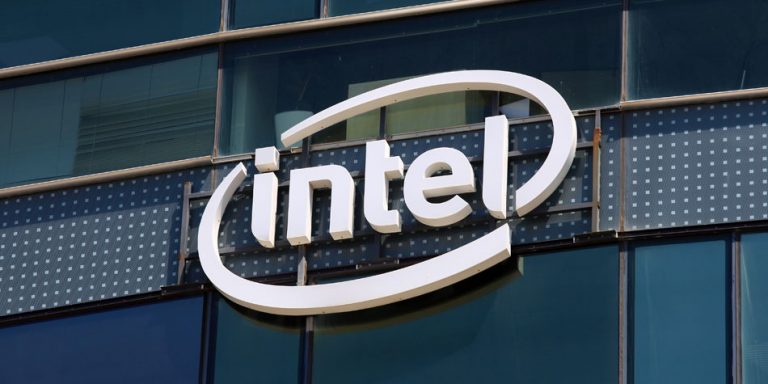The past few weeks have been tough ones for Intel (NASDAQ:INTC) shareholders, as Intel stock has peeled back from its early June peak of $57.60 to a multi-month low near $47… an 18% setback. But, it can’t be said the punishment wasn’t deserved.
Not only was the market reminded of just how much good competition the chipmaker faces on all fronts, but also another batch of security flaws unique to some of its computer processors were announced.
It’s a far cry from the decidedly dominant and largely bulletproof Intel of just a few years ago.
Can the company ever get back to its glory days? Certainly anything’s possible. But, Intel already is behind in technology at the same time new CEO is still getting comfortable in his seat. It’s going to take a lot of work and at least a little bit of time. The latter, however, is something current and would-be owners of Intel stock just may not be willing to give.
Intel Stock and Missing the Boat
The mobile phone market is conspicuously absent of Intel. That race has mostly been won by Qualcomm (NASDAQ:QCOM). Intel tried and failed to make a meaningful dent in the space and finally folded in mid-2016.
That’s not the key concern here and now though; you can’t lose what you never had. In the meantime, Advanced Micro Devices (NASDAQ:AMD) has come back from the dead to rattle Intel in a couple of key markets (consumer computer processors and server processors .to be precise).
On top of that, Nvidia (NASDAQ:NVDA) has become the power player of the movement that makes graphics processors the heart and soul of a data center server rather than the more traditional CPU.
It wasn’t so much that its rivals won so much is it is that Intel lost.
Perhaps the most high-profile unforced error Intel has committed in recent memory is its failure to bring a 10 nanometer CPU to the market before AMD began production of 7 nanometer silicon.
In this context, the nanometers in question refer to the distance between a central processor’s (Pentium, Core, Athlon, Celeron, etc.) transistors. The smaller the distance electrons need to travel from one transistor to the next, the faster that processor is.
It’s not the only piece of the puzzle that matters in the world of CPUs, but it’s a biggie.
Advanced Micro Devices’ top-tier CPUs presently ship with 12 nanometer technology, but the company aims to largely leapfrog the 10 nanometer milestone and begin shipping 7 nanometer CPUs early next year. Intel says it won’t be shipping a 10 nanometer chip until late next year, which may mean wide-scale adoption of the tech can’t happen until early 2020.
The error is simply in the fact that this was a battle Intel was far better equipped to win than AMD was three to five years ago.
Tech Miscues and Intel Stock
Were it just the race to 10, or 7, nanometers, the miscue may be dismissible. Indeed, Intel has even unveiled stop-gap solutions that rev up the functional speeds of its CPUs by integrating conventional RAM memory into the processing mix, buying it time while it continues to work on higher-performance processors.
Even that maneuver, however, somehow falls flat.
Though still only a modest part of most data center computing environments, the future of data centers is going to be the use of graphics processor chips in place of the traditional CPU, a shift that favors Nvidia and works against Intel.
Bob Venero, CEO of Future Tech, commented on the matter just a few days ago:
“We’re seeing a ridiculous uptick around GPU utilization, whether it’s deep learning or high-end graphics. The GPUs are outpacing the CPU in versatility in delivering content and increasing value from a data center perspective… Nvidia is definitely going down the right track.”
Intel is countering, aiming to improve an existing CPU architecture in a way that for most intents and purposes is a whole new kind of computing environment. The recent acquisition of Nervana is a step in that direction. Nervana CEO Naveen Rao explained as much in a recent interview.
Once again though, such an integration takes time. Nvidia is working on its next-generation wares too and already offers hardware that’s built from the ground up to organization’s seeking AI-enables solutions.
Never mind the fact that now-former Intel CEO Brian Krzanich conceded in June that Advanced Micro Devices’ relatively new EPYC server chip would be stealing market share from Intel during the latter half of this year.
Bottom Line for Intel Stock
With that as the backdrop, Intel stock holders have much to think about, and have good reason to wonder of the company’s newly-selected CEO Robert Swan is the right person for the job.
Even if he’s a perfect fit, however, Intel is still months if not years behind its competitors on several R&D fronts.
It got there, by the way, by cultivating a corporate culture that’s reactive rather than proactive. That’s a tough habit to break, and is even tougher when you have to spend more time and energy selling relatively uncompetitive hardware just to maintain a respectable degree of market share.
Swan may have to spend so much time playing defense for the next couple of years that he finds little time to play offense. It’s R&D offense, though, that’s so desperately needed now.
It’s tough to imagine Intel stock being the top pick in the computer hardware space while Intel figures out how to catch up with its competition.
As of this writing, James Brumley did not hold a position in any of the aforementioned securities. You can follow him on Twitter, at @jbrumley.

